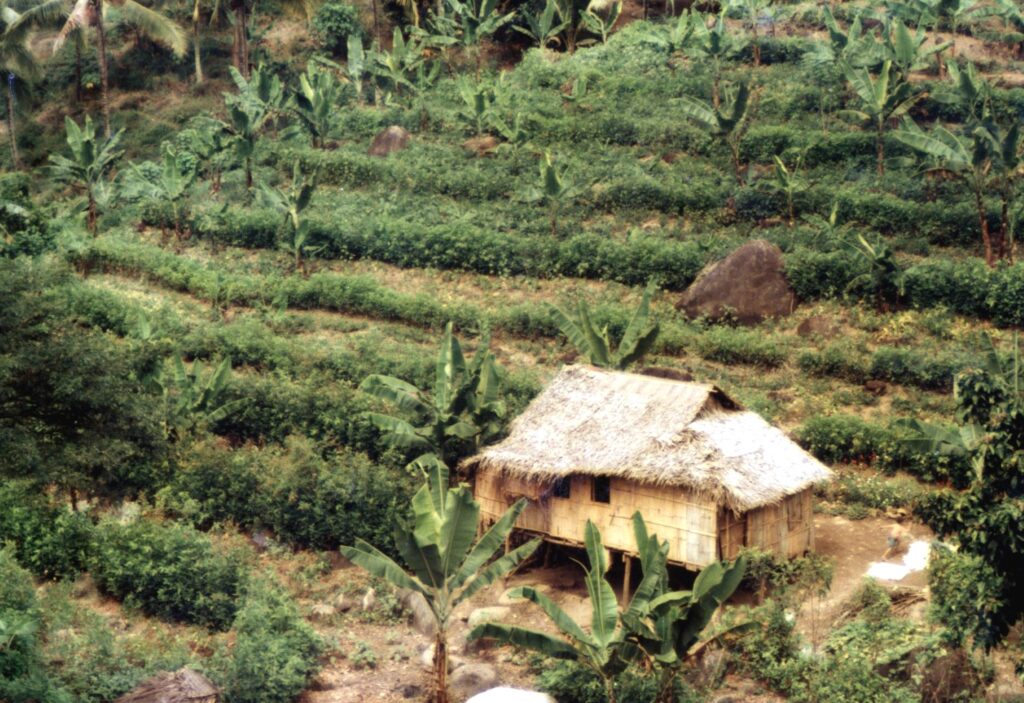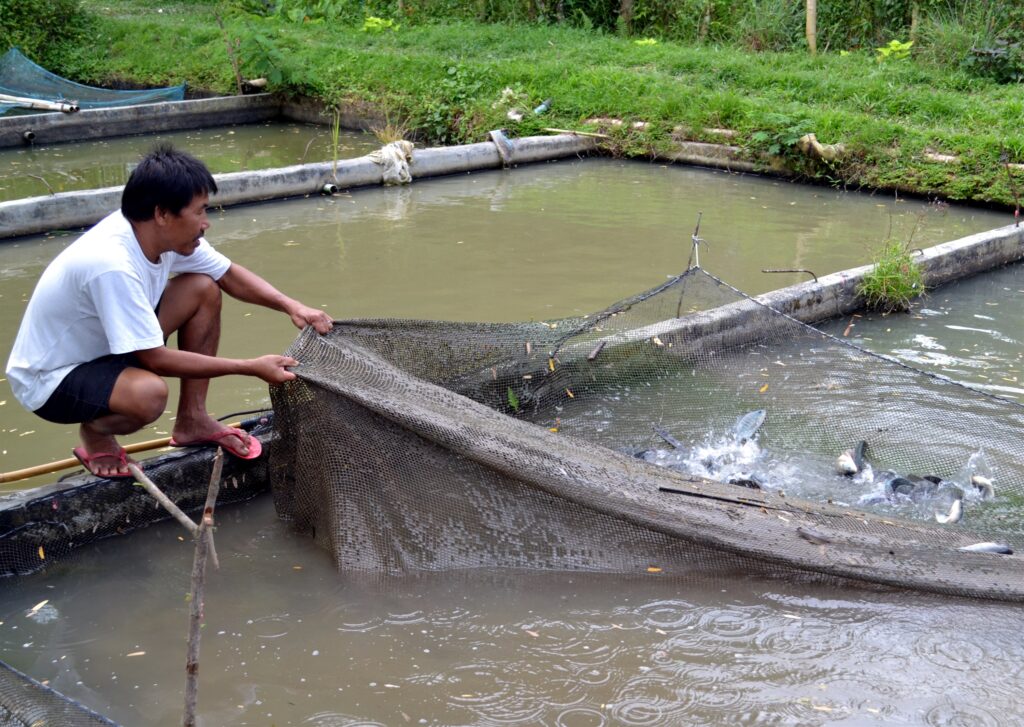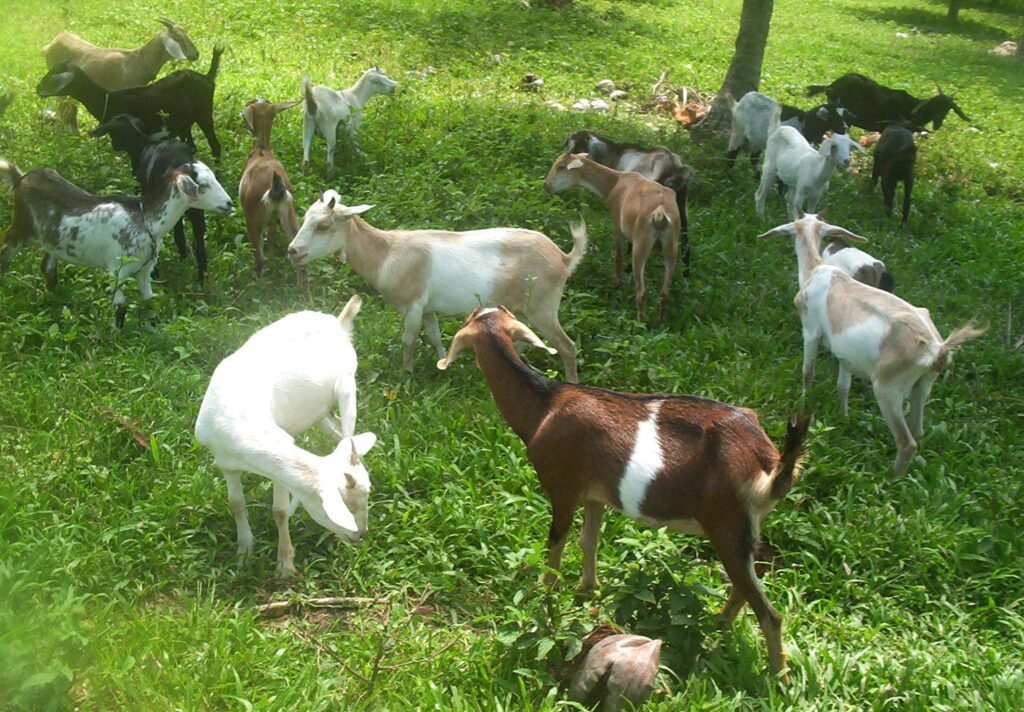Text and Photos by Henrylito D. Tacio
The municipality of Bansalan is touted as “the green town of Davao del Sur.” It is understandable as it has several farms that practice ecologically sound and environment-friendly schemes.
In barangay Kinuskusan, there is a training center that has been visited by thousands of people from all over the country. Even before farm tourism has become a buzzword in the travel world, people flock to the Mindanao Baptist Rural Life Center (MBRLC) to see the technologies it has developed through the years.
“The MBRLC has been at the forefront of improving the lives of the Filipino people, both physically and spiritually,” commented then-President Gloria Macapagal-Arroyo during the center’s 30th anniversary. “They have provided our people with the necessary guidance in order to become productive members of society.”
Since its humble beginning in September 1971, MBRLC has become one of the most often visited places in Mindanao. People from other countries – from Australia to Zimbabwe, from Afghanistan to Vietnam, from the United Kingdom to the United States – have also visited the center.
So far, about half a million people have paid a visit to the Watson Farm, as it was then called as it was founded by an American agricultural missionary from Mississippi named Harold R. Watson.
“From an initial effort to train and improve the productivity of farmers in the area, it has spread as a reputable model throughout the Philippines and touched all of Asia,” said Jerry A. Rankin, former president of the International Mission Board based in Richmond, Virginia. “Agricultural technology and methods have turned barren hills into productive farms.”
Some scribes have described MBRLC as a Disneyland of organic farming systems. “What we are promoting at the center is organic farming,” says Jethro P. Adang, the second Filipino to become director of the center; the first one was Roy C. Alimoane. (Previously, the center was managed by Americans: Harold R. Watson, Jon J. Palmer, and Steve L. Musen.) “We want to show to our visitors that farming systems that protect the environment can also be productive and sustainable.”
The United Nations Food and Agriculture (FAO), in its report, Organic Agriculture and Food Security, believes organic agriculture is one of the methods that can fight hunger, tackle the issues of climate change aside from being beneficial for farmers, consumers, and the environment.

Sloping Agricultural Land Technology 
Organic and diversified farm 
Harold R Watson
In a recent report, Lucille Elna Parreno-de Guzman gives this further definition: “Organic agriculture is an agricultural production system that avoids or largely excludes the use of synthetically compounded fertilizers, growth regulators, pesticides, livestock feed additives, and genetically modified organisms and products.”
That’s what MBRLC is trying to do on its farm located in barangay Kinuskusan, about 10 kilometers away from the town proper. As 60% of the country’s total land area of 30 million hectares is considered uplands, it has developed four sustainable farming schemes.
The Bureau of Soil and Water Management, a line agency of the Department of Agriculture, considered organic agriculture as one of the methods that can combat land degradation. In fact, it has been found that organic agriculture does not only helps improve soil fertility but also prevents wind and water erosion of the soil, improves water infiltration and retention capacity, reduces surface and groundwater consumption and subsequent soil salinization, and reduces ground and surface water contamination.
Erosion is the most pervasive form of land degradation. “Soil is made by God and put here for man to use, not for one generation but forever,” Watson said. “It takes thousands of years to build one inch of topsoil but only one good strong rain to remove one inch from unprotected soil on the slopes of mountains.”
On another occasion, Watson said, “Soil erosion is an enemy to any nation – far worse than any outside enemy coming into a country and conquering it because it is an enemy you cannot see vividly. It’s a slow creeping enemy that soon possesses the land. We must consider ourselves in a state of emergency; our topsoil is all going….”
The possible solution to the erosion problem is Sloping Agricultural Land Technology (SALT 1), where two hedgerows of nitrogen-fixing plants are planted together following the upland’s contour lines. “The idea is to stop the topsoil from eroding,” Adang says. Uplands under cultivation in the country have lost about two-thirds of their valuable topsoil, the primary resource in agriculture.
The technology is very simple. The hedgerows are planted in very dense double rows to serve as erosion barriers. When the hedgerows – a combination of various nitrogen-fixing tree species and shrubs like ipil-ipil, kakawate, flemingia, and rensonii – attain the height of two meters, they are cut back to about 40 centimeters, and the cutting is placed in the 3- to 5-meter alleys where crops are growing.
SALT is considered a diversified farming system. Aside from the hedgerows, rows of perennial crops such as coffee, bananas, and citrus are grown in areas occupied by corn. The annual crops are rotated: corn is followed by soybeans or peanuts and then followed again by corn. “In this way, a farmer has something to harvest every month throughout the year,” Adang states.
The success of SALT has ushered to the birth of three more variants, each one addressing a certain niche for the upland farmers.
As malnutrition is a big problem, the MBRLC developed Simple Agro-Livestock Technology (SALT 2). Livestock particularly refers to goats, whose milk and meat can be the farm’s source of protein. Twelve dairy does, and one buck is raised in a one-half hectare. The goat house is located at the center. The lower portion is planted to various leguminous crops and napier grass, which are the source of forage for goats. The upper portion is allotted to agricultural crops.

FAITH Garden 
Fishpond 
Goat raising
“As we are raising dairy goats, we practice zero grazing,” Adang says. The leguminous crops are cut and given to goats. The goat manure is used as fertilizer for forages and crops. “The sources of income for the farmer are milk, goats, and some from his crops,” he says.
The Philippines is fast losing its forest cover. To save the lingering forests, the MBRLC tries to integrate more trees into its SALT systems. In fact, the remaining two systems have more trees in them: Sustainable Agroforest Land Technology (SALT 3) and Small Agrofruit Livelihood Technology (SALT 4).
The two-hectare SALT 3 is small-scale reforestation; one hectare is planted to agricultural crops while the other hectare is allotted to trees like mahogany, narra, raintree, and ipil-ipil. The forest component is located at the upper portion to douse the impact of the raindrops.
To further curb the rushing water from the upper portion, bamboo is planted in the middle of the two components as a boundary crop. In the lower portion, the original SALT scheme is still followed.
Since Mindanao is touted to be the fruit basket of the country, MBRLC developed the one-half hectare SALT 4. The area is planted to various fruit trees like durian, mangosteen, lanzones, marang, and guava. While the fruits are still young, the area is planted to annual crops (banana and pineapple) and vegetables (string beans, peanuts, cucumber).
For the lowlands, the center has developed a gardening system called Food Always In The Home (FAITH), which can provide all-year-round vegetables for a family with six members. “A refrigerator in the farm is what we call it,” Adang says.
In a sense, it is. You can pick fresh tomatoes, eggplants, ampalaya, alugbati, winged beans, malunggay, and okra. You can even harvest fruits like pineapple and papaya, which are planted along the boundary of the garden as fences.
The 100-square meter garden can provide 300 grams of fresh vegetables daily. The central feature of the garden is a series of raised garden beds into which bamboo baskets and trench composts are set about one foot in depth. These are filled with little manure and some decomposed garbage and packed with leaves of grasses and leguminous plants like kakawate, flemingia, rensonii, and ipil-ipil.
In all its systems, the center doesn’t use pesticides. “The key to good pest control,” Adang says, “begins with knowing your crops and checking them regularly to make sure they are healthy and not bothered by something that might want to eat them before you do! When you see a pest or disease problem, with diligent scouting it can be controlled before it becomes a major problem.”
If infestation is immense, however, the center makes homemade pesticides using neem, kakawate, marigold, garlic, and hot pepper.
At the MBRLC, wastes are no waste. They use them as feed for their night-crawling earthworms (Eudrilus eugeniae). “With the aid of aerobic microorganisms (that is, bacteria and fungi), earthworms digest processed organic materials under favorable temperature and moisture conditions,” Adang explains. “The materials that pass through the digestive tract of the earthworms come out in a texturized, sanitized and deodorized form of castings known as vermicompost.”
They use vermicompost in fertilizer for their crops. “While low in major plant nutrients compared to chemical fertilizers,” Adang says, “vermicompost supports microorganisms, which make nutrients more readily available to plants and produce substances that promote plant growth and health.”
MBRLC also has fishponds, where it raises tilapia. In some parts of the ponds, Azolla and golden apple snail are also raised (although not together). Azolla is used as feed for tilapia and ducks. Azolla contains 4-5 percent nitrogen, 1-1.5 percent phosphorus, and 2-3 percent potassium. “As such, azolla can also be applied as organic fertilizer in fresh, dried, or composted form.” As for golden apple snails, they are utilized as feed for ducks.
Chicken and pigs also dominate some areas of the farm. Instead of being a problem, the center uses pig manure as a source of biogas. They are using biogas to pasteurize goat’s milk and cook food prepared in the canteen.
The MBRLC was actually conceptualized based on the masteral thesis of Watson. He found out that most agricultural training centers in the 1960s already had sophisticated facilities but didn’t have demonstration farms where the trainees could immerse themselves.
“In those years, training centers had huge buildings where people could learn modern techniques of farming,” Watson said. “But unfortunately, they didn’t have demo fields that show how to do those techniques.”
At the MBRLC, training is conducted every week. The trainees don’t learn only the basics of organic farming the center developed but also the skills in doing them. “We call it hands-on-experience,” Adang says. “Only 25% of the training is done in the room, the remaining 75% are finished in the field.”
Each day, about 30 participants join the training. But in these days of the coronavirus pandemic, the participants are trimmed down to only 10. “We follow all the health protocols recommended by the government,” Adang says.
Even those who come to the center for a tour learn so many things. “We usually have a short orientation at the training hall,” Adang says. “After that, they can tour around the center, which usually takes about half a day. But in some instances, if farmers have so many questions during the tour, it may take about one day.”
Right now, brief exposure study tours (BEST), as the center calls them, are being discouraged again due to the pandemic. But a few individuals who happen to drop by are being toured. There is a minimal fee of P45 per person for the tour.
“Our farming systems are far from perfect,” admits Adang. “Every day, we are learning. But we are happy to share what we know. We don’t hide anything here. Everyone is free to copy what we do.”
In fact, for encouraging international utilization of the farming schemes the center has developed through the years, its first director, Watson, received the Ramon Magsaysay Award – Asia’s Nobel Prize – for international understanding.
MBRLC has also received recognitions from the regional office of the UN Food and Agriculture Organization, various government agencies, and Presidential Citation from former president Corazon C. Aquino.

